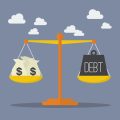1. Understanding Form 1099-NEC and 1099-K
If you’re a gig worker in the U.S.—maybe driving for Uber, delivering for DoorDash, or freelancing online—you’ve probably heard about Form 1099-NEC and Form 1099-K. Knowing the differences between these two forms is key to making tax season less stressful.
What is Form 1099-NEC?
Form 1099-NEC (Nonemployee Compensation) reports payments made to people who are not employees, like independent contractors and freelancers. If you earned at least $600 from a business or individual during the year, they are required to send you this form by January 31st.
Key Details of Form 1099-NEC:
- Who Issues It: Companies or clients that paid you $600 or more for your services.
- What’s Reported: Income from freelance work, side gigs, or any nonemployee services.
What is Form 1099-K?
Form 1099-K (Payment Card and Third Party Network Transactions) is sent out by payment processors like PayPal, Venmo, Stripe, or even gig platforms themselves. It’s used to report payments processed through credit cards or third-party networks. For tax year 2023 and earlier, you’d only get a 1099-K if you had over $20,000 in payments AND more than 200 transactions. Starting with tax year 2024, the IRS plans to lower the threshold to $5,000 in total payments (and eventually down to $600 in future years).
Key Details of Form 1099-K:
- Who Issues It: Payment platforms or apps that process your payments.
- What’s Reported: Total gross payments you received through their network—this means before fees are taken out.
Quick Comparison: 1099-NEC vs. 1099-K
| Form | Who Sends It? | What Payments Are Reported? | Typical Recipients |
|---|---|---|---|
| 1099-NEC | Your client or company | $600+ for services as an independent contractor | Freelancers, gig workers, side hustlers |
| 1099-K | Payment processor (e.g., PayPal, Stripe) | Total payments via credit card/third party platform (thresholds apply) | Sellers on Etsy/eBay, rideshare drivers paid via app, freelancers paid through platforms |
Why Does This Matter?
The IRS gets copies of all these forms too. So, it’s important to know which income gets reported where—and make sure you include everything on your tax return! Even if you don’t get a form because you didn’t meet the threshold, you’re still responsible for reporting all your income.
2. Who Receives These Forms and Why
If youre a gig worker, freelancer, or independent contractor in the U.S., you might have heard about Form 1099-NEC and Form 1099-K. Understanding who gets these forms—and why—is key to staying on top of your taxes. Let’s break down the criteria for receiving each form and what triggers the reporting requirements under U.S. tax law.
What is Form 1099-NEC?
Form 1099-NEC (Nonemployee Compensation) is used by businesses to report payments made to people who aren’t employees—think freelancers, consultants, or anyone working independently. If you’ve done work for a business or client and they paid you $600 or more in a year (not as an employee), they should send you this form.
Who Gets a 1099-NEC?
| Type of Worker | Payment Threshold | Example |
|---|---|---|
| Freelancers | $600/year | Graphic designer, writer, photographer |
| Independent Contractors | $600/year | Uber driver with direct contracts, handyman |
| Sole Proprietors | $600/year | Self-employed consultant |
If you’re paid via check, direct deposit, or bank transfer—not through credit card or third-party platforms—you’ll likely get a 1099-NEC from each business that paid you at least $600 during the year.
What is Form 1099-K?
Form 1099-K covers payment transactions processed through third-party networks like PayPal, Venmo (for business), Stripe, Square, or even credit cards. This form reports your gross payments received through these platforms.
Who Gets a 1099-K?
| Type of Worker or Seller | 2024 Federal Threshold* | Example |
|---|---|---|
| Gig Workers Using Apps/Platforms | $5,000/year (federal; may be lower in some states) | Etsy seller, Uber/Lyft driver paid via app, Airbnb host |
| Anyone Receiving Payment via Third-Party Network | $5,000/year (federal; may be lower in some states) | Tutors paid via PayPal, event photographers using Square |
*Note: The federal threshold for 2024 is $5,000. Some states require 1099-Ks at much lower amounts, even as low as $600.
Key Differences Between 1099-NEC and 1099-K
| Form Type | Payment Source | Threshold (Federal) |
|---|---|---|
| 1099-NEC | Banks, checks, direct deposit from clients/businesses | $600/year per payer |
| 1099-K | Third-party payment processors (PayPal, Stripe, apps) | $5,000/year per platform* |
If you earn money both directly from clients and through online platforms or apps, you could receive both forms for the same tax year. Make sure to keep good records so you dont miss anything when filing your taxes.

3. What Income to Report from Each Form
As a gig worker in the U.S., its important to understand exactly what types of income are reported on Form 1099-NEC and Form 1099-K, and how to handle them when filing your taxes. Lets break down the differences and reporting requirements for each form so you can stay compliant with the IRS and avoid any surprises at tax time.
Understanding What’s on Each Form
| Form | Type of Income Reported | Who Sends It | Common Examples |
|---|---|---|---|
| 1099-NEC | Nonemployee compensation for services performed (e.g., freelance work, independent contractor gigs) | Clients or businesses that paid you $600 or more in a year | Rideshare driving, freelance writing, graphic design, tutoring |
| 1099-K | Payment card and third-party network transactions (gross payments processed through apps or platforms) | Payment processors or platforms if you meet certain thresholds (see current IRS limits) | Etsy sales, eBay income, Uber/Lyft driver earnings, payments via PayPal/Venmo (for business) |
How to Report Income from Each Form
Income from 1099-NEC:
All income listed on your 1099-NEC is considered self-employment income. Youll report this on Schedule C (Profit or Loss from Business) as part of your personal tax return (Form 1040). Remember, even if you don’t receive a 1099-NEC (for example, if you earned less than $600 from one client), you still need to report all your self-employment income.
Income from 1099-K:
The amounts shown on your 1099-K reflect gross payments, meaning the total amount before fees or expenses are deducted. You’ll also report these on Schedule C. Be careful—sometimes the same income might be reported on both a 1099-NEC and a 1099-K if, for example, a client paid you through an online platform. Make sure not to double-report your earnings!
Tips for Accurate Reporting
- Keep Good Records: Track all payments received and compare them with your forms.
- Deductions Matter: You can subtract eligible business expenses on Schedule C, reducing your taxable income.
- Avoid Double Counting: Review both forms carefully—if the same payment appears on both, only include it once in your gross receipts.
- No Form? Still Report! If you earned money but didn’t get a form, you’re still required to report that income.
Quick Reference Table: What to Report Where?
| If You Received… | You Should… |
|---|---|
| Only a 1099-NEC | Add up all amounts and report as business income on Schedule C. |
| Only a 1099-K | Total the gross payments and enter as business income; deduct related fees/expenses separately. |
| Both 1099-NEC & 1099-K (potential overlap) | Cross-check for duplicate amounts. Only report each dollar earned once! |
| No form but earned money (cash, tips) | You must still report all self-employment earnings—even without a form. |
By understanding what income goes on which form and how it should appear on your taxes, youll be better prepared to accurately file your return and minimize stress during tax season.
4. Common Pitfalls and IRS Red Flags
Areas of Confusion for Gig Workers
When it comes to reporting income with Forms 1099-NEC and 1099-K, gig workers often run into confusion. Here are a few common areas where mistakes happen:
| Issue | Why Its Confusing |
|---|---|
| Double Reporting Income | Sometimes the same income appears on both 1099-NEC and 1099-K, leading to reporting it twice. |
| Missing 1099s | You might not get a form for every gig job if you earned less than the reporting threshold, but you still need to report that income. |
| Mismatched Information | The amounts on your forms may not match what you received if clients made mistakes or if payments were split across platforms. |
| Not Reporting Cash Payments | Some workers forget that all cash or non-digital payments must be reported as income even without a 1099 form. |
Tips for Avoiding Mistakes
- Keep Detailed Records: Track every payment you receive, whether or not you get a 1099 form. Use spreadsheets or apps to log your earnings and expenses.
- Cross-Check Forms: Compare your own records with what’s reported on each 1099-NEC and 1099-K. Only report the income once—even if it shows up on multiple forms.
- Report All Income: The IRS expects you to report total earnings from all sources, even if no form was issued.
- Review Personal Info: Make sure your name, Social Security Number (SSN), and address are correct on every tax document.
- Save Receipts: Keep receipts for business expenses so you can claim deductions and back up your claims if needed.
IRS Red Flags That Can Trigger Audits or Penalties
The IRS uses computer systems to spot tax returns that don’t add up. Here are some things that could raise red flags:
- Mismatched Income: If the income you report doesn’t match what’s shown on your 1099-NEC or 1099-K forms, the IRS may contact you for clarification.
- Unreported Income: Failing to report any gigs—even small ones—can lead to penalties if the IRS finds out through matching programs.
- High Deductions: Claiming unusually large expenses compared to your reported income could prompt questions from the IRS.
- Missing Tax Forms: Not including all necessary forms (like Schedule C) when reporting self-employment income may delay processing or cause further scrutiny.
A Quick Reference Table: How to Stay Out of Trouble
| Pitfall/Red Flag | How to Avoid It |
|---|---|
| Mismatched income totals | Double-check numbers on all forms before filing taxes |
| Forgetting cash jobs or side gigs without a 1099 | Add up all gig work—no matter how small—using your own records as backup |
| Poor recordkeeping for deductions | Save every receipt related to your gig work in one place throughout the year |
| Mistakes in personal information on forms | Edit errors with clients or platforms before they send in forms to the IRS |
5. Tips for Staying Organized and Filing Smoothly
Track Your Income All Year Round
As a gig worker, you might receive payments from multiple clients and platforms. Staying on top of your income is key to accurate reporting on both Form 1099-NEC and 1099-K. Use a simple spreadsheet, an app, or even a dedicated notebook to log every payment as you receive it. This habit makes tax time much less stressful.
Example Tracking Table
| Date | Client/Platform | Amount Received | Payment Method |
|---|---|---|---|
| 01/15/2024 | Upwork | $450 | Direct Deposit |
| 02/03/2024 | Etsy Shop | $120 | PayPal |
| 02/20/2024 | DoorDash | $250 | Bank Transfer |
Keep All Your Forms in One Place
You might get several different forms—1099-NEC from clients, 1099-K from payment processors like PayPal or Stripe, and maybe more. Set up a digital folder labeled “Tax Documents 2024” and drop scanned copies or PDFs of each form there as soon as you get them. Don’t forget to keep any related receipts or expense records handy, too!
Leverage Tax Software Designed for Gig Workers
Many popular tax software tools like TurboTax, H&R Block, and TaxAct offer features tailored for freelancers and gig workers. These programs can import your 1099 forms directly (sometimes straight from your email or financial accounts), guide you through deductions, and help you avoid common mistakes. Some even let you snap pictures of receipts with your phone.
Popular Tax Software Options for Gig Workers
| Name | Main Features | Price Range (as of 2024) |
|---|---|---|
| TurboTax Self-Employed | Imports 1099s, expense tracking, live support for freelancers | $0–$129 + state fees |
| H&R Block Self-Employed Online | User-friendly interface, guided deductions, audit support add-on | $0–$115 + state fees |
| TaxAct Self-Employed | Covers gig work income, easy import options, mobile app | $0–$100 + state fees |
Prepare Early for Tax Season
The IRS deadline usually falls on April 15th, but don’t wait until the last minute! Start organizing your documents as early as January when your first forms arrive. If you expect to owe taxes, consider setting aside money each month so you’re not caught off guard by a big bill. If things feel complicated, don’t hesitate to reach out to a certified tax professional with experience helping gig workers.


